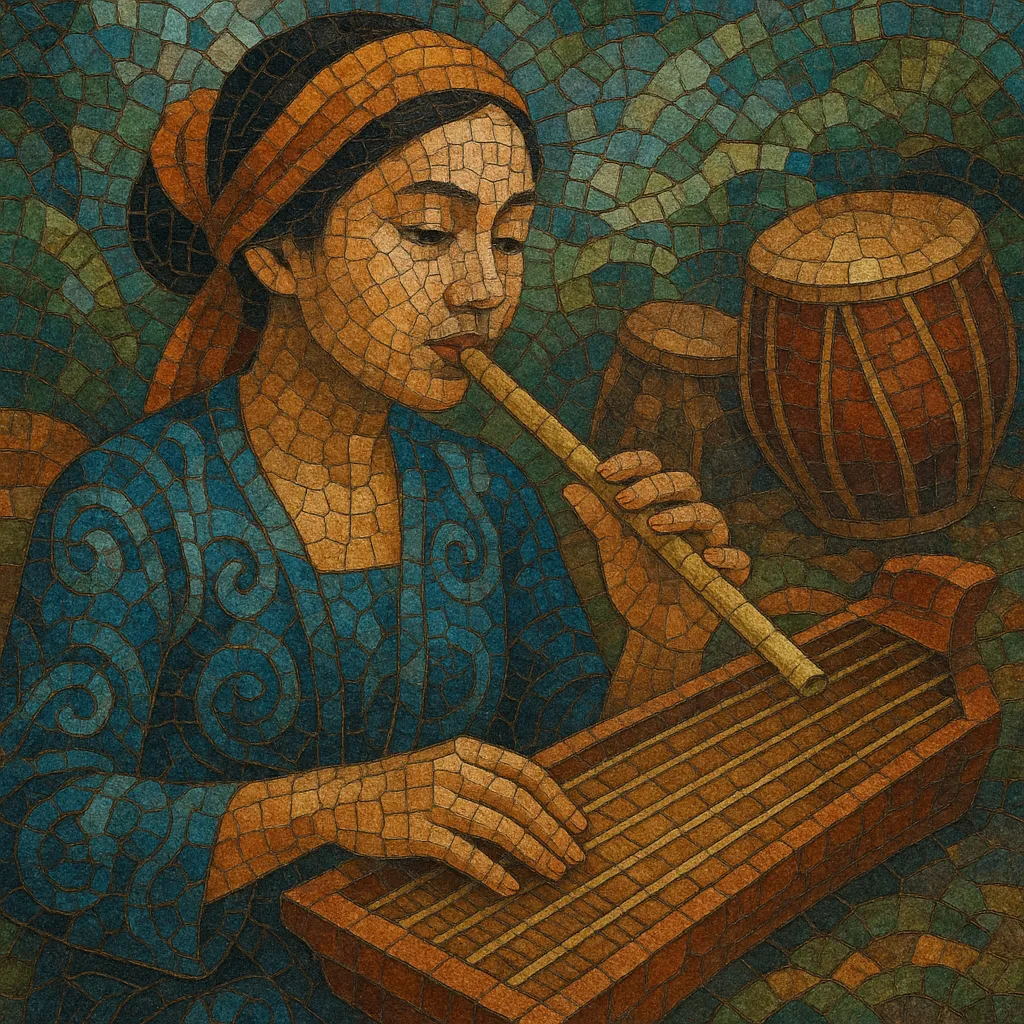Pop Sunda is a regional Indonesian pop style sung primarily in the Sundanese language from West Java.
It blends Western pop song structures and instruments with traditional Sundanese timbres, modes, and ornamentation—most recognizably the shimmering pairing of kacapi (zither) and suling (bamboo flute), alongside gentle kendang (drums) and degung-inspired textures.
Melodies are lyrical and expressive, often drawing on Sundanese modal systems (laras pelog and salendro), while arrangements may range from acoustic, folk-like settings to band-oriented pop with guitar, keyboards, and light drum kit. Lyrically, Pop Sunda tends to be romantic and nostalgic, evoking everyday life, humor, and the landscape of the Priangan highlands.
Pop Sunda emerged in West Java as local musicians adapted contemporary Indonesian and Western pop songwriting to Sundanese language and aesthetics. Artists and arrangers began to pair verse–chorus forms and accessible hooks with modal colors and timbres familiar from kacapi suling, tembang Sunda (cianjuran), and degung gamelan.
Through cassette culture and radio in Bandung and surrounding cities, Pop Sunda spread widely. Producers and composers experimented with gentler band arrangements—adding electric bass, keyboards, and drum kit while retaining bamboo flute lines, kacapi arpeggios, and kendang grooves. Signature recordings and TV appearances helped establish memorable standards and stars, making Pop Sunda a cultural touchstone for Sundanese identity.
In the 2000s, Pop Sunda diversified: some artists leaned acoustic and folk, others incorporated light rock, contemporary Indonesian pop, or dance-pop elements. The genre has remained a living regional tradition, with younger singers modernizing production while preserving Sundanese language, melodic turns, and characteristic ornamentation. Digital distribution has further amplified local scenes, new songwriters, and collaborations that bridge traditional ensembles and pop studios.


